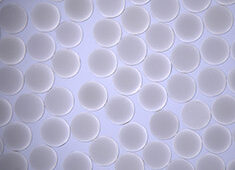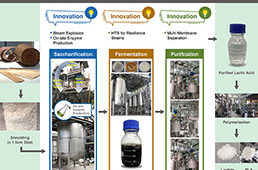
Researchers have discovered a mineral that could help convert heat, sunlight and movement all at once in electricity that could eventually be used for the batteries needed to operate tablets and cell phones.
A recent study has uncovered a mineral that can convert sunlight, heat and movement all at once into electricity.
Researchers from the University of Oulu in Finland have found a mineral with the perovskite crystal structure that has the necessary properties to extract energy from multiple sources at the same time. This could supplement batteries on electronic devices, while improving energy efficiency and reducing how often these devices need to be charged.
KBNNO, a ferroelectric material filled with tiny electric dipoles analogous to tiny compass needles in a magnet, is thought to harness many forms of energy.
When ferroelectric materials like KBNNO undergo changes in temperature, their dipoles misalign, which induces an electric current. An electric charge also accumulates according to the direction the dipoles point and deforming the material causes certain regions to attract or repel charges, again generating a current.
While one material may be good for solar cells with the right properties for efficiently converting solar energy into electricity, another is better at harnessing energy from changes in temperature and pressure, which can arise from motion, making them pyroelectric and piezoelectric materials.
However, one type of energy often isn’t enough and a given type of energy isn’t always available.
Researchers have previously studied the mineral’s photovoltaic and general ferroelectric properties, but did so at a couple hundred degrees below freezing. The researchers didn’t focus on properties related to temperature or pressure.
However, the new study focused on evaluating all of these properties at once above room temperature, according to Yang Bai, co-author of the study.
The experiments proved that while KBNNO is reasonably good at generating electricity from heat and pressure, it isn’t quite as good as other perovskites. The most promising finding is that the researchers were able to modify the composition of KBNNO to improve its pyroelectric and piezoelectric properties.
“It is possible that all these properties can be tuned to a maximum point,” Bai said in a statement.
Bai and colleagues are currently exploring improving the material by combining KBNNO with sodium. Within the next year they hope to build a prototype multi-energy-harvesting device.
“This will push the development of the Internet of Things and smart cities, where power-consuming sensors and devices can be energy sustainable,” he said.
According to the study, the results could pave the way for the development of hybrid energy harvesters and sensors, which can convert multiple energy sources into electrical energy simultaneously in the same material.
The study appeared in Applied Physics Letters.




